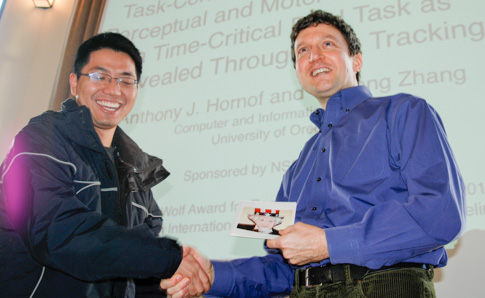Human-Computer Interaction (HCI) Lab
at the University of Oregon (UO)
The Human Computer Interaction (HCI) Laboratory at the University of Oregon (UO) pursues a wide range of unique projects that creatively explore how emerging technologies can best serve humanity. Please contact Dr. Anthony Hornof if you are interested in joining the lab.
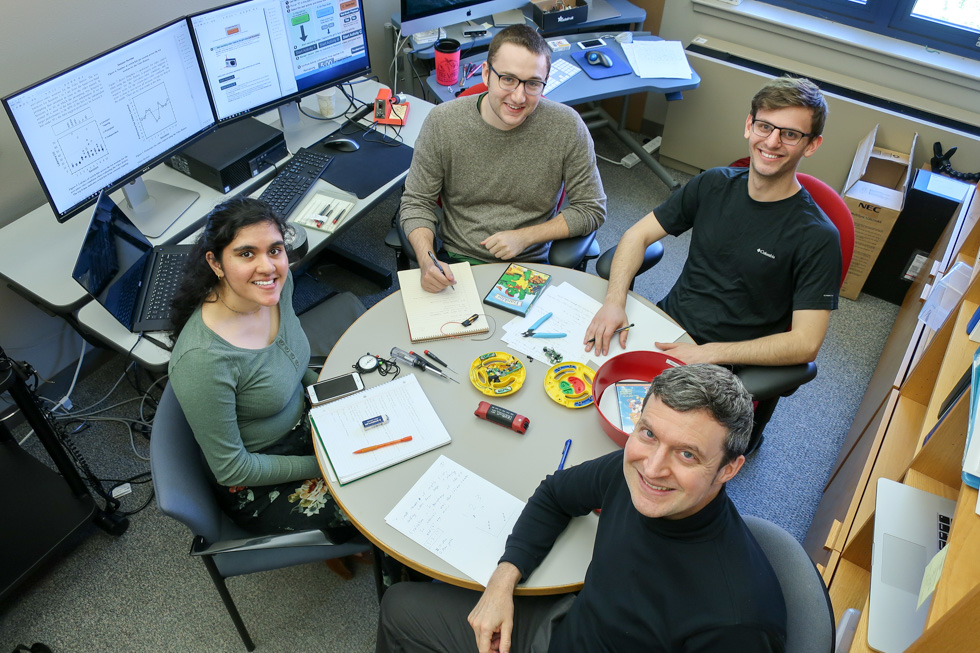
Lab members in Spring, 2017 (clockwise from left): Undergraduates Vinitha Gadiraju,
Haley Whitman, and Sam Gerendasy; Dr. Anthony Hornof.

Erik Brown develops portable systems for aquaculture research and wildlife management. He considers user-interface issues every day. He develops systems that run quickly and efficiently by writing user-interface code that communicates directly the small microcontrollers that are used in the systems. Erik Brown pursued undergraduate research with Dr. Hornof in the UO HCI Lab. He contributed to multiple research projects, co-authored a paper with Dr. Hornof, and was a finalist in the CHI 2008 Student Design Competition. (River photo from Smith-Root.com)
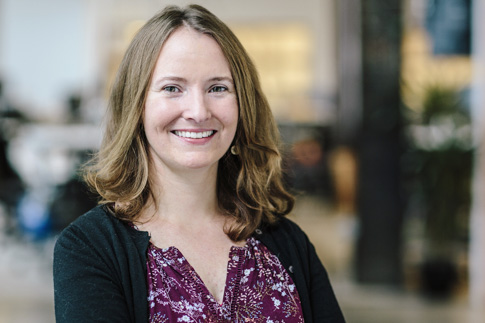
Dr. Moira Burke is a Research Scientist on the Core Data Science team at Facebook. Dr. Hornof served as her UO Honors College thesis advisor. She continued her research with Dr. Hornof after graduating in 2001, and was first author on a 2005 ACM ToCHI journal article. She then earned a Ph.D. in Human-Computer Interaction from Carnegie Mellon University. Her first two outstanding publications were with Dr. Hornof, but she has since then written many more, and her work is widely cited. (Photo from thoughtcrumbs.com)
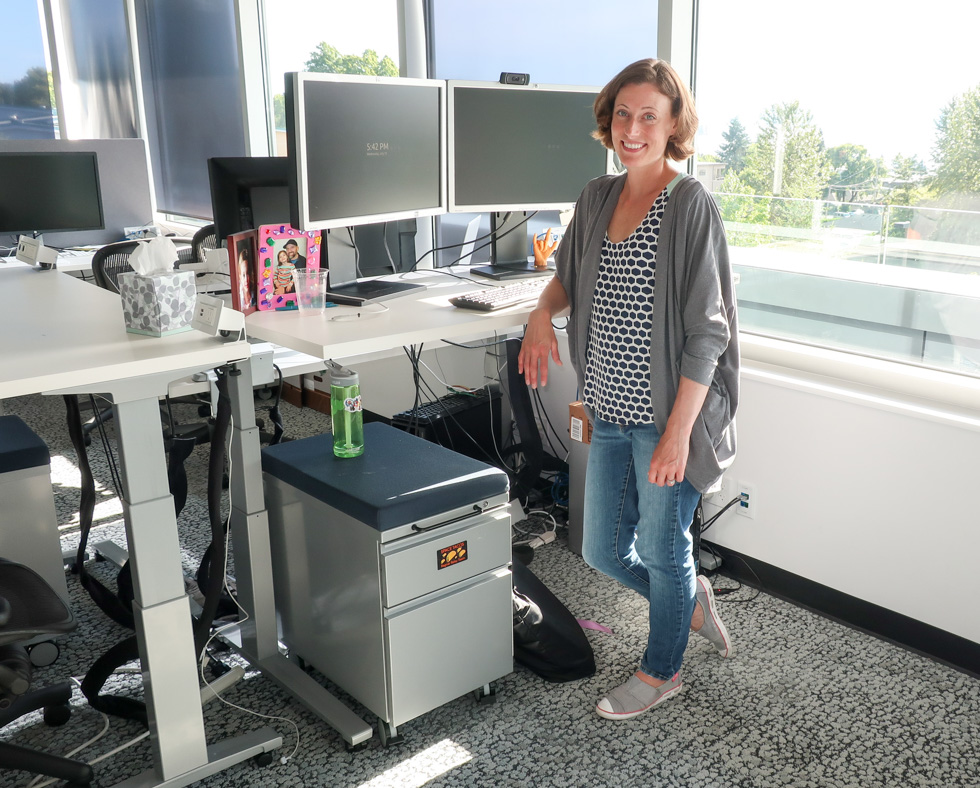
Dr. Anna Cavender is at Google in Seattle. She is the Technical Program Manager for all of Google's accessibility efforts for Allo, Duo, Android Messages, Google Voice, and Project Fi. Dr. Cavender started developing technology interventions for people with disabilities when she pursued undergraduate research with Dr. Hornof in the UO HCI Lab, specifically developing the "EyeDraw" software. She then went on to earn a Ph.D. in Computer Science and Engineering from the University of Washington. She was recognized by the Computer Research Association as The Most Outstanding Undergraduate Researcher in 2004, in part for her work on EyeDraw.
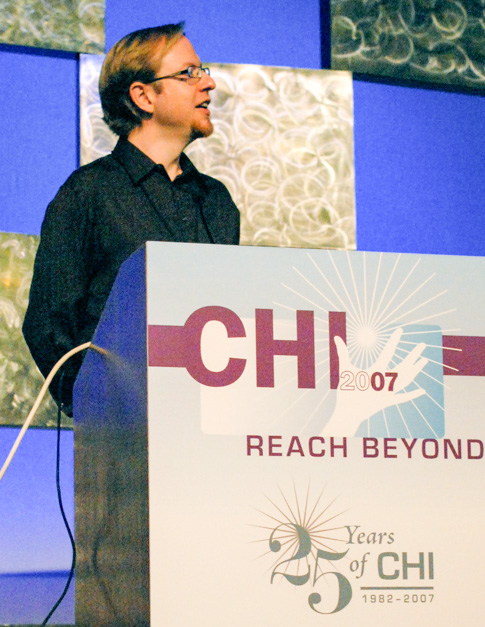
Dr. Tim Halverson is shown presenting at CHI 2007, the top international conference on human-computer interaction. Dr. Halverson completed a Ph.D. with Dr. Hornof in the UO HCI Lab in 2008. He co-authored numerous award-winning papers with Dr. Hornof on cognitive modeling and eye tracking. After completing his Ph.D., he worked as a Research Computer Scientist with the Collaborative Interfaces Branch of Air Force Research Laboratory at the Wright Patterson Air Force Base in Dayton, Ohio. He currently collaborates with the same group as a private contractor.
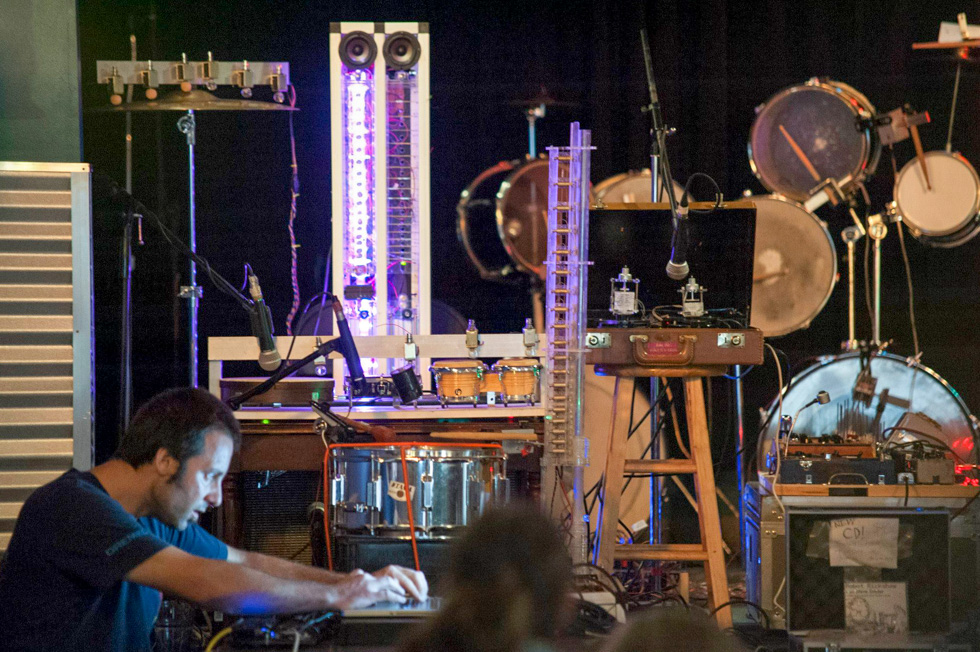
Troy Rogers is shown performing with vocal, string, clarinet, and percussion robots at the 2014 Zeitgeist Experiments at Teatro Zuccone in Duluth, MN. Troy received a Master of Music in Intermedia Music Technology degree from UO in 2005, and worked with Dr. Hornof during the summer of 2005 to develop EyeMusic v1.0, a musical composition that is performed with eye movements. Troy performed the eye-controlled composition at SEAMUS 2006, the Society for Electro-Acoustic Music in the United States. He then went on to perform with robots such as those shown here. (Photo by Mike Guello)
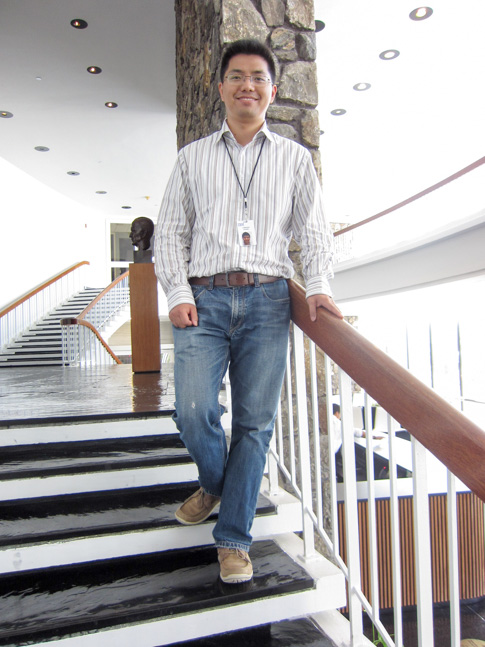
Dr. Yunfeng Zhang (left) at the IBM T. J. Watson Research Center in Yorktown Heights, NY, where he is a Research Staff Member. Dr. Zhang completed a Ph.D. with Dr. Hornof in the UO HCI Lab in 2015. He co-authored numerous award-winning papers with Dr. Hornof on cognitive modeling and eye tracking. At IBM, he works in the Cognitive Environments Lab, where develops multimodal and conversational interfaces for interacting with IBM's "Watson" artificial intelligence system. Dr. Hornof (below) acknowledges one of Yunfeng's many best-paper awards. (Photo below by Kyle Vessey)
